En español, en français, em português.
The channels advertised on Google Hotel Ads (among them the hotel’s direct channel) can now show, as well as their prices, photos of the different published rooms. This new feature has arrived thanks to Room Booking Module or RBM, the newest feature that Google has added to its product, Google Hotel Ads.
What is Google looking for by launching Room Booking Module?
Undoubtedly, its intention is to continue presenting more information and options to the user in order to facilitate their decision-making process. Images are a fundamental element to choose one room over another, thus facilitating the sale of products of a higher quality and, consequently, a higher price. Therefore, this is another step towards providing Hotel Ads with features normally associated to OTAs, which will make users go to them to choose a hotel. Google does not want to be yet another price-comparison site but rather the main searching, decision-making and even booking point with Book on Google (launched in 2017, despite it only being active in the United States and the United Kingdom).
Room Booking Module, linked and exclusive to Book on Google
In your current Google Hotel Ads campaigns (which Google calls Standard), you can choose whether you want to redirect the user to your website or to the Book on Google funnel so they can finish their booking there. It is your decision to activate it or not.
On the other hand, in campaigns which are part of Room Booking Module, all users will be redirected to Book on Google, without the possibility of redirecting them to your hotel’s website. We understand that this move by Google is to boost Book on Google and looks increasingly strategic.
How and when are Room Booking Module results shown?
As of today, RBM results are not shown on standard Google searches of a hotel name on a desktop computer. However, funnily enough, they appear on searches from a mobile device. On a mobile device, in the Overview and Prices tabs, you can see the RBM room photos.
RBM shown on mobile in 20 seconds.
On a desktop computer, you can see them in Google Maps when you search for ‘hotel + destination name’, e.g. ‘hotel Barcelona’, and all the options to choose dates, occupancy, etc. appear.
RBM shown on desktop in 20 seconds.
If we analyse the content of RBM we see the following elements:
Markets
RBM is currently only active in sales points in the United States. In other words, its results are only shown to US users on google.com. Google is planning to expand this feature to other markets in the future.
Why aren’t Standard Hotel Ads campaign advertisers the same as those on Room Booking Module and why is the order different?
Not all OTAs that advertise on Hotel Ads are on RBM. For example, the complete absence of Booking.com is quite striking (Agoda, however, is there), but we do frequently see Expedia and its different brands like Hotels.com, Travelocity and Venere. There are mainly two reasons which justify this:
- To be in RBM you need an additional development which gives you access to Book on Google. Not all OTAs have it.
- Having to mandatorily use Book on Google may discourage some OTAs that prefer to maintain a more ‘direct’ relationship with the client. We already analysed the pros and cons of Book on Google in regard to the hotel and its direct sales (the same applies to OTAs in this case).
Like we previously said, the results order in Standard campaigns is not the same as in Room Booking Module, and there are two reasons for it:
- Since it is not the same channels competing, it is normal that the order is different. In Standard results, the order goes from top to bottom but in RBM it goes from left to right.
- The order criteria are the same in Standard and RBM results, but RBM accepts a special bid multiplier for these results, therefore allowing you to bid more aggressively in RBM than in normal campaigns in order to gain positions, as explained below.
Cost of Room Booking Module. Can I bid differently from normal campaigns?
The same bids, costs and commissions as your current Google Hotel Ads campaigns are maintained:
- If the hotel is in a CPC model, the same CPC for each click will be applied to RBM. There is a specific bid multiplier for RBM. Depending on the results of your adverts on RBM, you can increase or decrease your bids to maximise efficiency.
- If the hotel invests with a commission model, whether it is the original GHACP ‘commission program’ (commission on tax base after cancellations and no-shows), or the newer CPA model (payment for commission on bookings before cancellations), the same conditions will apply to bookings which come from RBM.
What are the pros and cons of RBM for the direct channel?
Pros:
- The use of images of your rooms. Images make these adverts highly relevant and attractive for the user due to their quantity, size and descriptions.
- Higher conversion rates. If a user is interested in looking through the images of your rooms in detail, it is assumed that he has a higher interest in your hotel and, therefore, in a potential booking. RBM conversion rates may be somewhat higher than in Standard campaigns.
- More visibility thanks to less competition. Like we said above, there are not many OTAs in RBM and this is an opportunity for as long as it lasts. Fewer advertisers mean less costs and more visibility.
- No additional management costs. You do not have to anything, since the same bids, costs and commissions as your current Hotel Ads campaigns are applied (with the multiplier as special feature).
- Higher upselling possibilities. By showing all rooms and rates in a more attractive manner, there is a higher probability that the user will book and feels more attracted by a superior room.
Cons:
- Doubts about Facilitated Bookings. There are hotels that are not too sure about booking interfaces such as TripAdvisor’s Instant Booking, trivago’s Express Booking and Book on Google, and they have reasons for it. For them, the fact that RBM forces them to use Book on Google is a disadvantage.
Update September 2022: «Express Booking» for hotels closes as of 1 October, 2022
- Lower visibility. It is still not visible on all sites and devices where the Standard adverts are.
How can I measure Room Booking Module results? How will it impact the metrics?
RBM activation offers the user two adverts of your direct channel: the traditional Hotel Ads (Standard) and RBM.
Fortunately, Google has incorporated a new filter to the Hotel Ads dashboard to differentiate Standard and RBM campaigns, which will easily allow us to see results from one or the other or combined.
Impressions: If the user finds your hotel and views results from the traditional Hotel Ads and from the new Room Booking Module, two impressions will be counted instead of one.
Clicks: Each module counts the clicks. If a user clicks on both entries, you will have two clicks. According to Google, RBM is complementary (in other words, it does not cannibalise Standard campaigns), so it is improbable that clicks will be made on both adverts.
CTR (click-through-rate) and conversions: Once the impressions and clicks are separated using the aforementioned filter, each module will have its CTR, conversions and conversion ratio numbers. All of this information will be accessible from the Hotel Ads dashboard.
I want to activate Room Booking Module. What do I need to do?
Since it is linked to Book on Google, you need a Google Hotel Ads integration partner that can also offer Book on Google (BoG). As of today, there are very few partners with this technology available to them. At Mirai, we are proud to be one of them since November 2017. You can request a complete Book-on-Google partners list from Google (you can also find Google Hotel Ads partners here).
Even though RBM is linked to Book on Google, you can still maintain your Hotel Ads campaigns redirecting traffic to your website and not to Book on Google:
In other words, if you activate RBM you will not be automatically activating Book on Google for your normal Hotel Ads campaigns.
Conclusion
With this new module. Google Hotel Ads continues to improve its result to offer the same level of detail as other metasearch engines and OTAs. Recently, it added the occupancy filter to its searches and now it allows you to show photos of the rooms without leaving the same page from where the search was made.
With this improvement of its search options, Google continues its path towards becoming an essential node where travel users can do everything they need: get information, decide and book their entire trip (hotels, flights, packages, experiences, etc.).
We believe that RBM is a good opportunity to attract your potential client visually, showing your rooms and reaching where some OTAs still can’t. The potential pros considerably outweigh the cons. It is worth trying it out and analysing the results.
To know more about how to boost your direct channel on metasearch engines, please click here or contact us at metasales@mirai.com



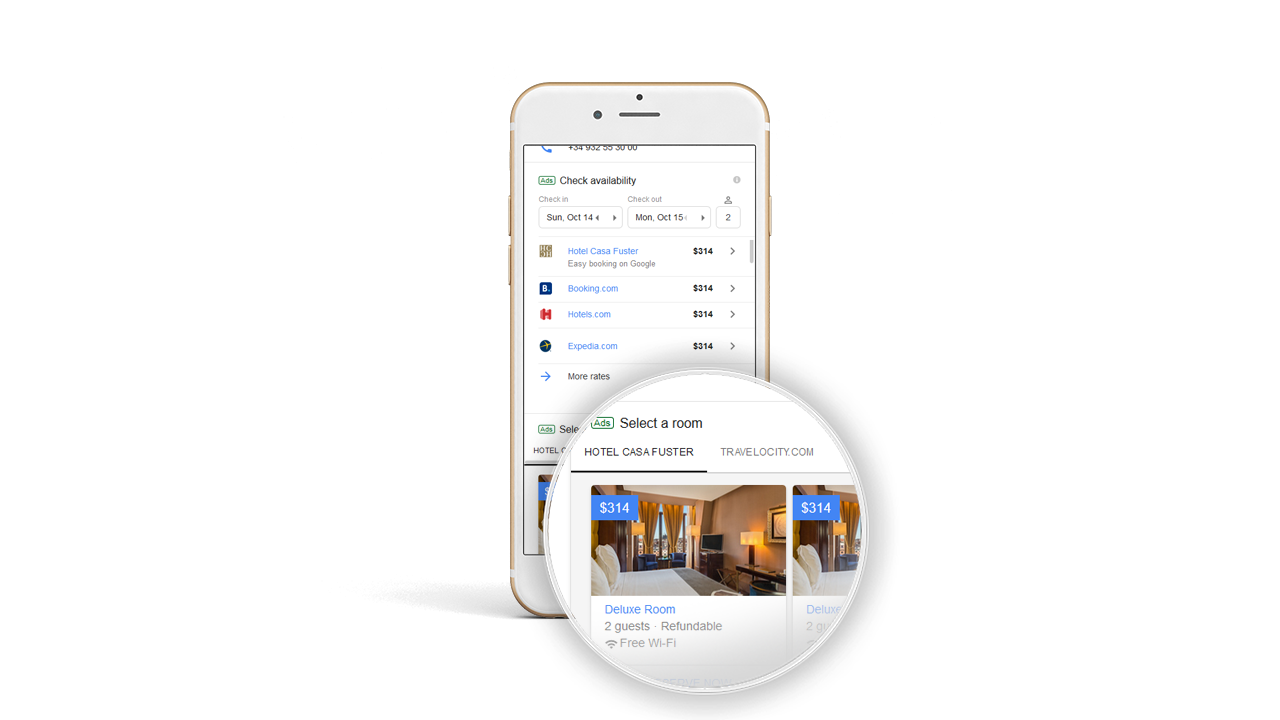
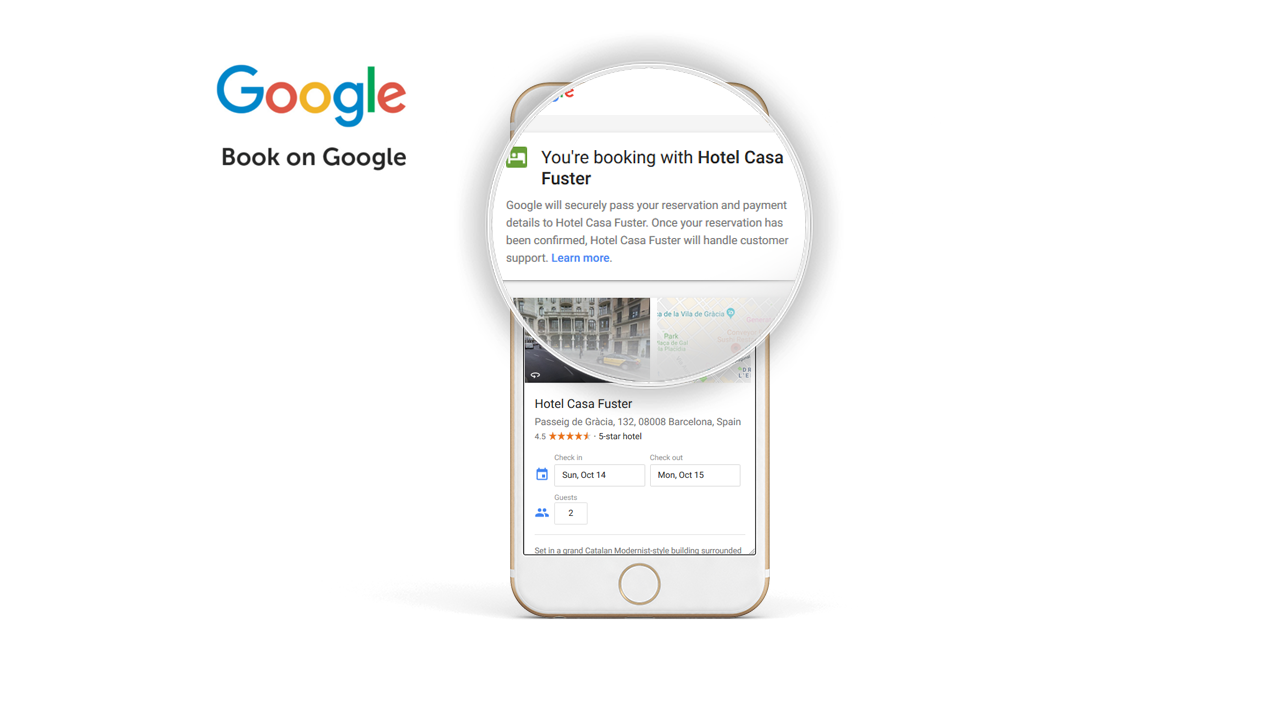
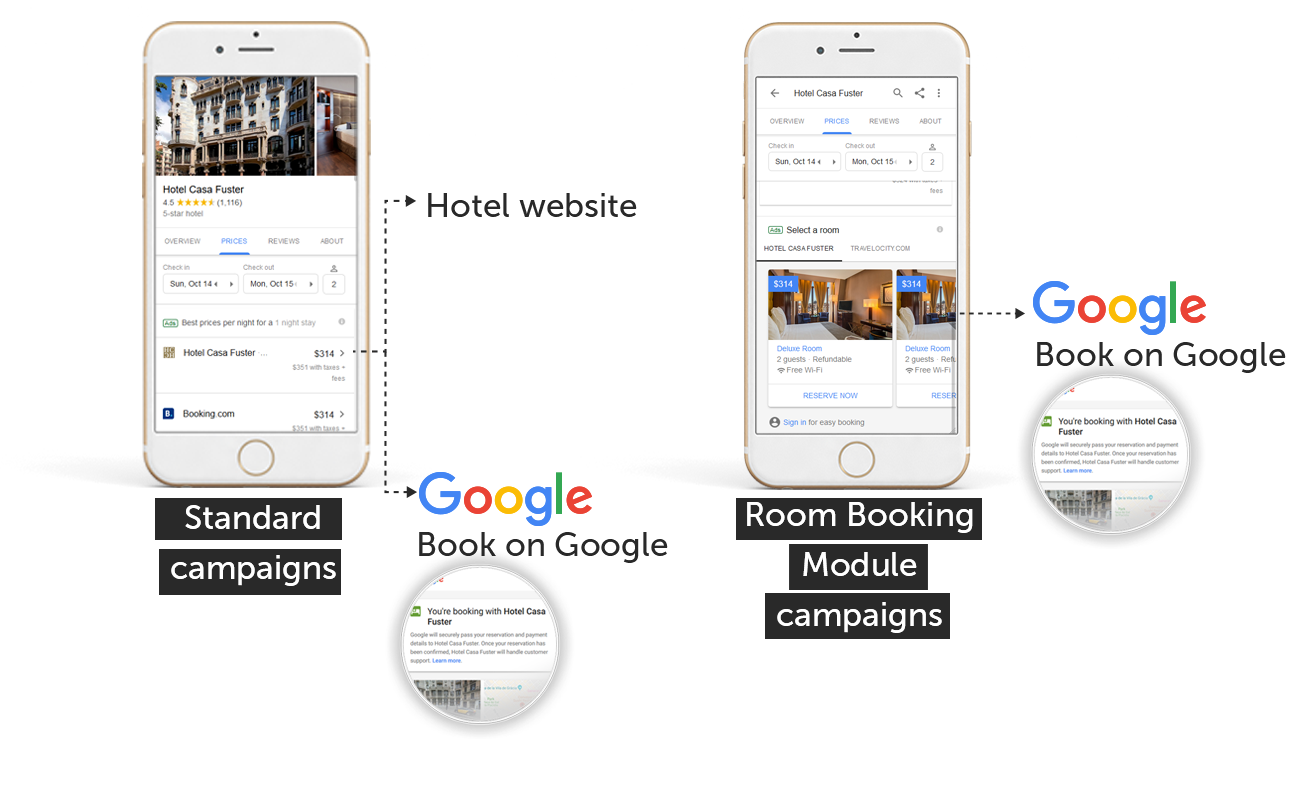
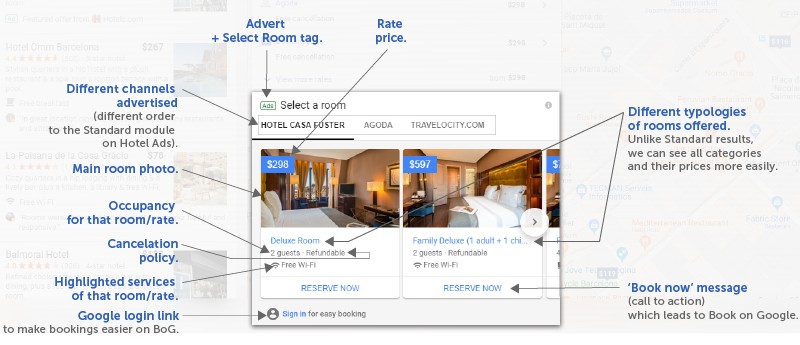

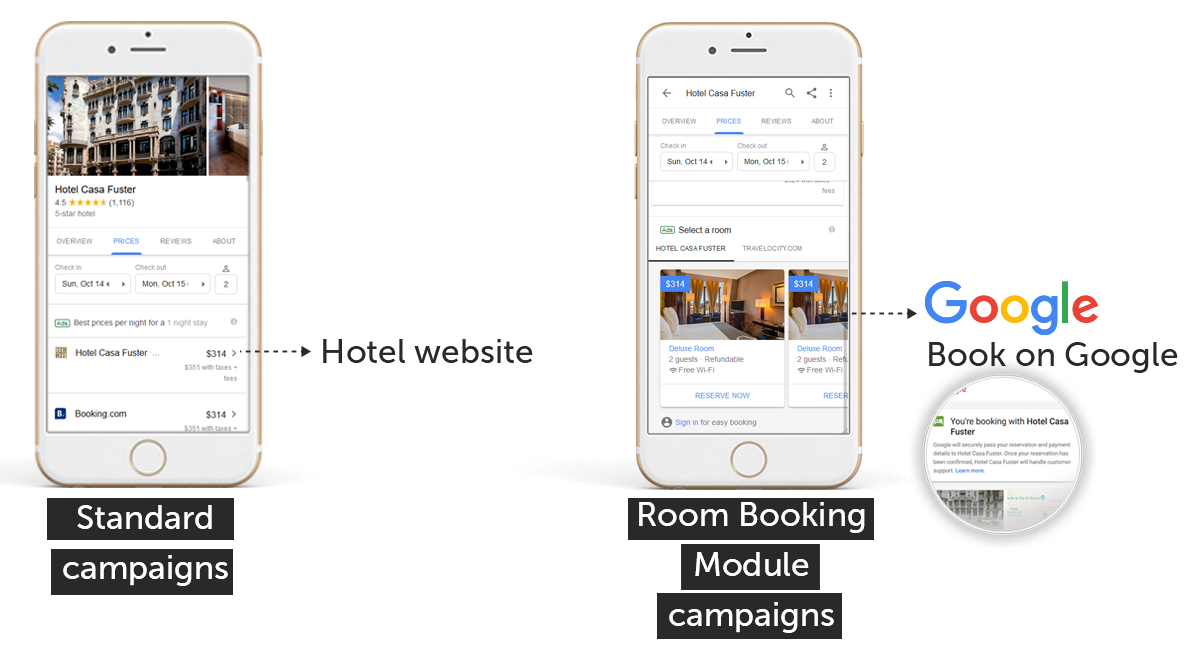
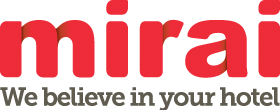
Among the many news announced by google for the coming months, certainly one of the most interesting. Will we be surprised, or will we be able to anticipate and exploit this new opportunity immediately and well?
Hi Gino,
the RBM functionality is already fully operative for GHA partners that have Book on Google running.